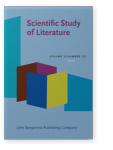Vol. 12:1/2 (2022) ► pp.28–48
Swirling currents
Identifying predominant themes and processes through a digital analysis of American nature writing
Understanding how humans relate to and think about nonhuman nature has never been more important. To begin exploring that question, our study compares literature (nature-writing) that explicitly addresses this relationship with literature of the same genre that does not address nonhuman nature (creative nonfiction) using the tools of digital humanities and ecological analysis. We used Linguistic Inquiry and Word Count (LIWC) and Meaning Extraction Method (MEM) to examine 228 texts. Resulting scores were then examined for gradients, patterns, and trends across texts using principal components analysis (PCA). Overall, we found that nature writing texts scored higher in analytical and authenticity scores; were associated with psychological processes such as perception, cognition, politics, and power; and were typified by individual word choice clouds associated with clusters of text such as tree/human/see/time/form/place than non-nature creative nonfiction. This analysis serves as a foundation for understanding the genre of nature-writing and the ways that humans think about nonhuman nature.
Article outline
- Introduction
- Methods
- Results
- Discussion
- Overarching summary variables: Analytical thinking and authenticity
- LIWC psychological variables: Spatial perception, tentative cognitive processing, and culture and politics
- MEM analysis – perception and natural elements
- Conclusions and limitations
-
References
